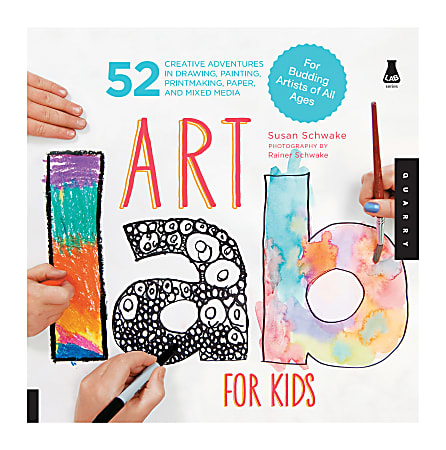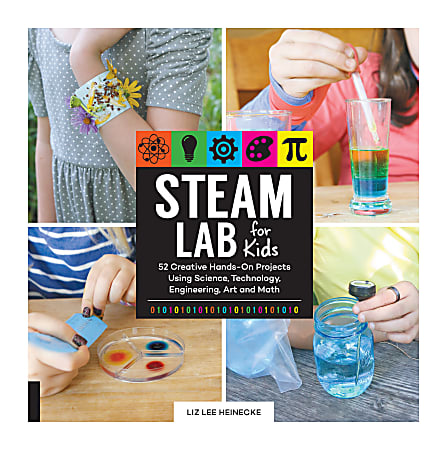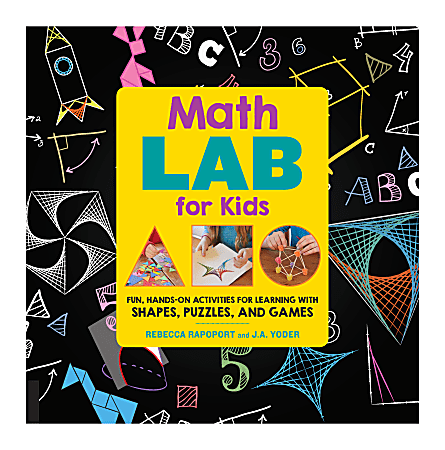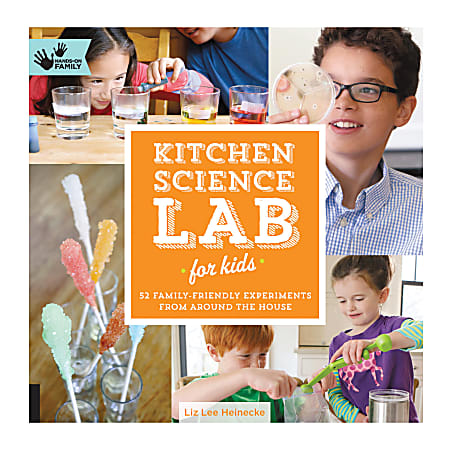Brain Lab for Kids - by Eric H Chudler (Paperback)

Similar Products
Products of same category from the store
AllProduct info
<p/><br></br><p><b> About the Book </b></p></br></br>"Brain Lab for Kids is an interactive and hands-on book that takes readers on [a] journey into the functions of the brain through experiments and creative activities"--<p/><br></br><p><b> Book Synopsis </b></p></br></br><p><strong><em>Brain Lab for Kids</em> offers 52 family-friendly activities, science experiments, and models to help you understand how the brain accomplishes all that it does.</strong><br /> <br /> Riding a bicycle, learning a new language, catching a ball, reading a book: these activities and everything else we see, hear, feel, and do are made possible by the soft, whitish-pink substance inside our heads called the brain. These hands-on projects will give you a<strong> new appreciation for your brain and the many amazing things it does for you</strong>.<br /> <br /> Have fun learning: </p> <ul> <li>how cerebrospinal fluid works by dropping eggs held in containers, with and without water.</li> <li>about touch receptors by making a touch maze with glue and cardboard.</li> <li>how people filter out unneeded sound by conducting a listening experiment.</li> <li>how vision interacts with taste and smell by tasting colored drinks.</li> </ul> <p>The labs are organized by unit themes: <strong>The Neuron</strong>, <strong>The Brain</strong>, <strong>Reflexes</strong>, <strong>Taste</strong>, <strong>Smell</strong>, <strong>Vision</strong>, <strong>Touch</strong>, <strong>Hearing</strong>, <strong>Sleep and Body Rhythms</strong>, and <strong>Memory</strong>. The "What's Going On" section for each lab explains the science behind the fun. "Brain Facts" are interesting, and perhaps surprising, bits of trivia related to each lab. Finally, "Thinking Deeper" has suggestions for taking the lab further.<br /> <br /> The expanding field of brain science, also called <strong>neuroscience</strong>, offers the opportunity for all of us to learn about ourselves and others, and how we can better communicate, motivate, inspire, and just plain collaborate together.<br /> <br /> The popular <strong>Lab for Kids series</strong> features a growing list of books that share <strong>hands-on activities and projects on a wide host of topics</strong>, including art, astronomy, clay, geology, math, and even how to create your own circus--all authored by established experts in their fields. Each lab contains a <strong>complete materials list</strong>, clear <strong>step-by-step photographs</strong> of the process, as well as<strong> finished samples</strong>. The labs can be used as singular projects or as part of a yearlong curriculum of experiential learning. The activities are open-ended, designed to be explored over and over, often with different results. Geared toward being taught or guided by adults, they are enriching for a range of ages and skill levels. Gain firsthand knowledge on your favorite topic with Lab for Kids.</p><p/><br></br><p><b> Review Quotes </b></p></br></br><br>A neuroscientist presents simple projects and activities designed to demonstrate the brain's major functions--and a few of its quirks. [...] Valuable insights into (arguably) our most important organ.--<i><b>Kirkus Reviews</b></i><br><br>A solid addition for STEM collections, and offers fresh ideas for science fair projects. Recommended.--<i><b>School Library Connection</b></i><br><br>This smart and fun collection will get synapses firing as kids discover how the brain works.--<i><b>Booklist</b></i><br><p/><br></br><p><b> About the Author </b></p></br></br><p><b>Eric H. Chudler</b>, Ph.D. is a research neuroscientist at the University of Washington with appointments in the Department of Bioengineering and Department of Anesthesiology & Pain Medicine; he is also the Executive Director/Education Director at the Center for Sensorimotor Neural Engineering. In addition to Eric's basic research into the how the brain processes sensory information, Eric has worked with precollege students and teachers for more than 20 years to develop resources and materials to help people learn about the brain. In 1997, with support from the National Institutes of Health, Eric established "Neuroscience for Kids," a website with information and interactive activities about neuroscience that can be used in the classroom or at home. Eric continues to expand the web site and develop new materials and programs. <p/> In addition to the creation of online materials, Eric has published several books, written articles, developed television programs ("BrainWorks") and contributed chapters to help students, teachers and the general public understand neuroscience and brain research. Eric is currently working with middle school teachers on the "Sowing the Seeds of Neuroscience" program that brings neuroscience and botany together in the classroom. Other neuroscience education efforts include coordinating the annual UW Brain Awareness Week Open House and working in India to teach Tibetan Buddhist monastics about neuroscience. <p/> Dr. Chudler has received several awards for his education and outreach efforts including the Education Award from the Association of Neuroscience Departments and Programs (2002), MERLOT Award for Exemplary Online Learning Resources (2002), Science Educator Award from the Society for Neuroscience (2003), Scientific AmericanScience & Technology Web Award (2004), MERLOT Award for Exemplary Online Learning Resources (2006), Career Achievement Award from Faculty for Undergraduate Neuroscience (2006), and the Science Prize for Online Resources in Education (SPORE) from the American Association for the Advancement of Science (2010). <br> </p>
Price History
Cheapest price in the interval: 12.29 on October 22, 2021
Most expensive price in the interval: 12.29 on November 8, 2021
Price Archive shows prices from various stores, lets you see history and find the cheapest. There is no actual sale on the website. For all support, inquiry and suggestion messages communication@pricearchive.us




















